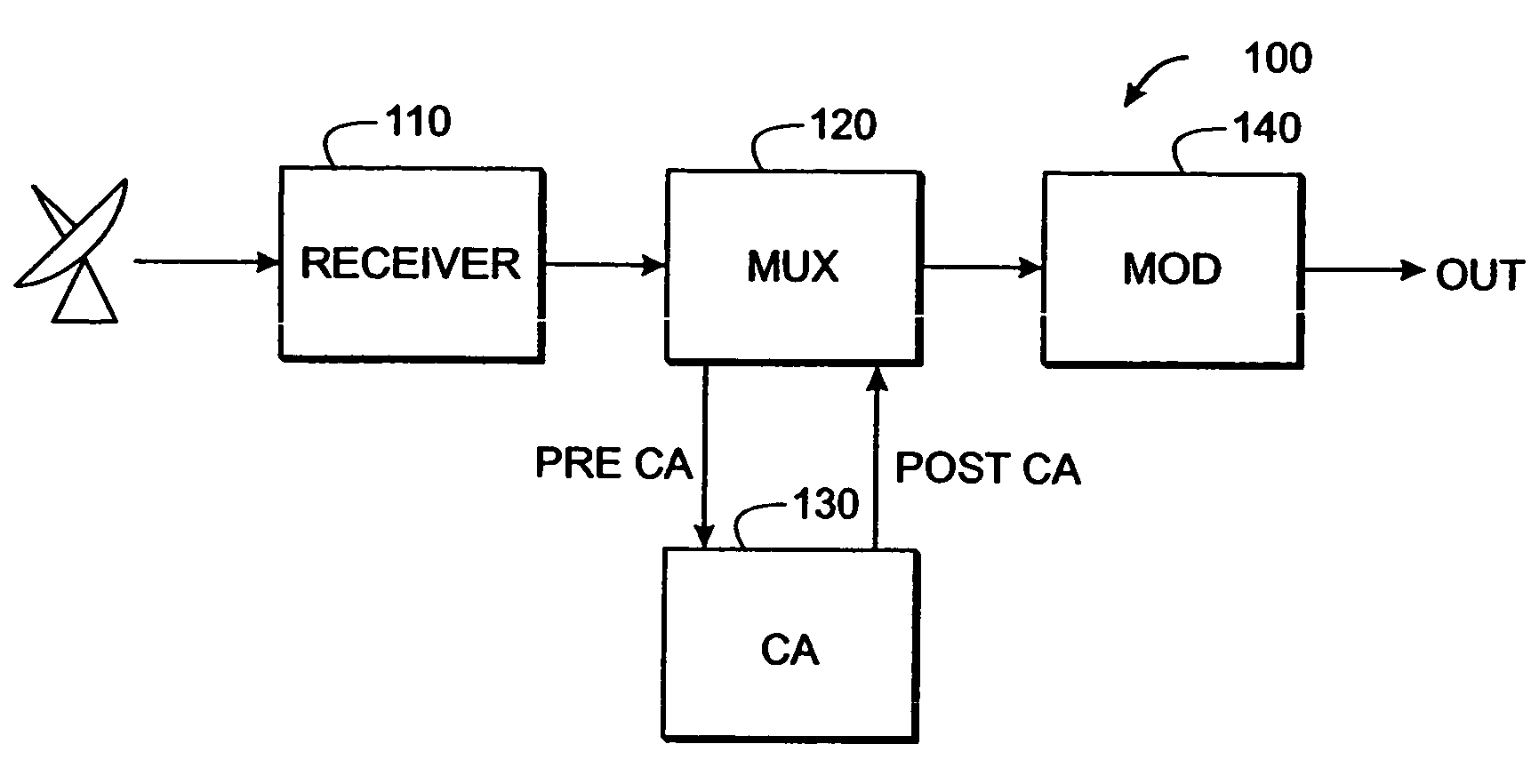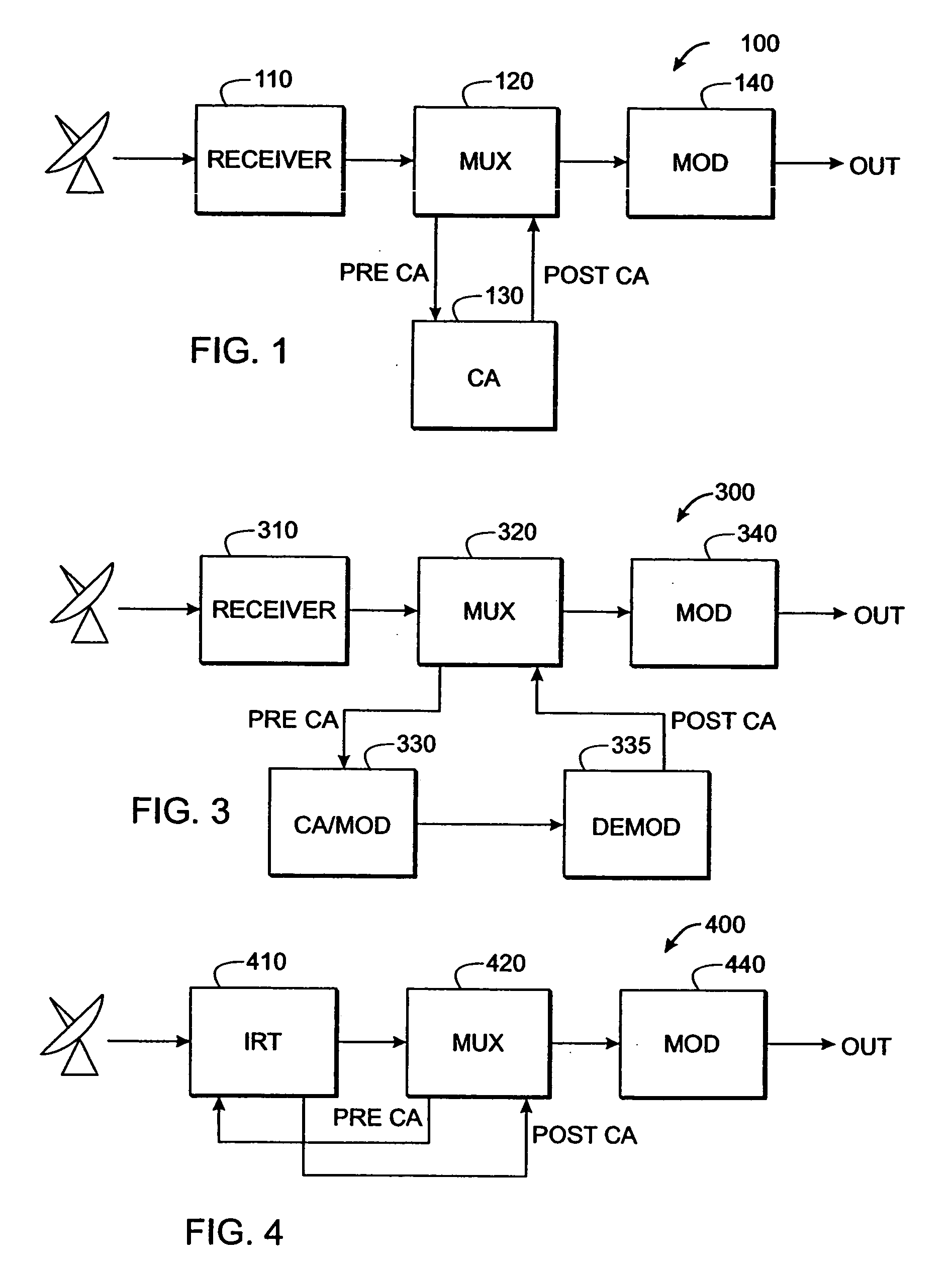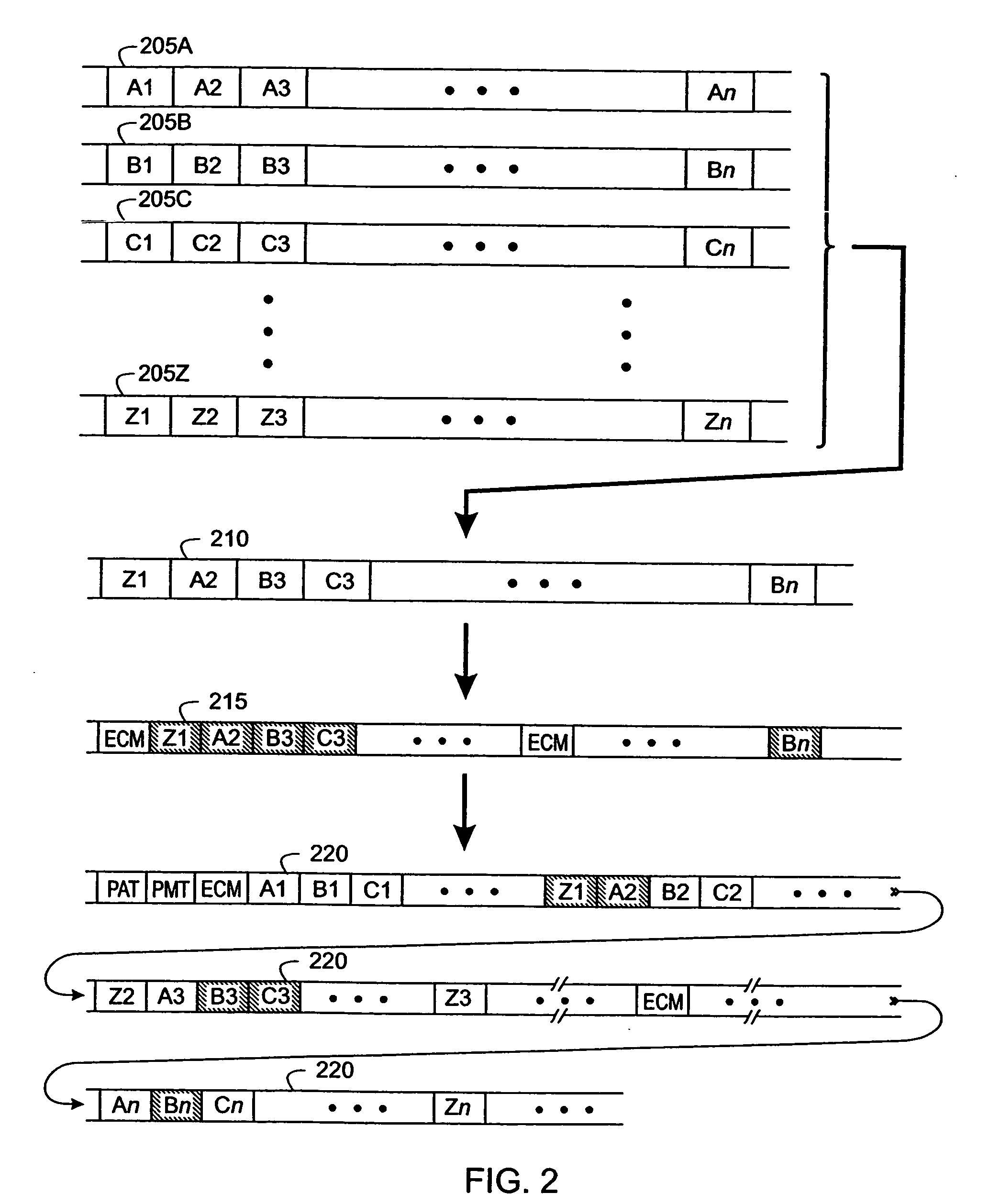Time-multiplexed multi-program encryption system
a multi-program encryption and multi-program technology, applied in the field of digital television systems, can solve the problems of inability to decode the component, the recovery of recoverable usable signals is unlikely, and the recovery is even more complicated
- Summary
- Abstract
- Description
- Claims
- Application Information
AI Technical Summary
Benefits of technology
Problems solved by technology
Method used
Image
Examples
Embodiment Construction
[0049] The present inventive technique improves utilization and throughput of digital television encryption hardware by separating one or more program streams into “critical” portions that will be encrypted and “non-critical” portions that will be transmitted “in the clear” (i.e., without encryption). This technique can work with existing CA systems, receivers, modulators, demodulators, etc., without modification of those devices.
[0050] Reference is made in the ensuing discussion described to the MPEG packet transport protocol as specified in ISO document 138180-1, “Generic Coding of Moving Pictures and Associated Audio Information: Systems” (hereinafter “MPEG Standard”) and applicable to various video, audio, and data representations. Also, US Patent Application Publication Number US2003 / 0026423 by Unger and Candelore, “Critical Packet Partial Encryption” (hereinafter “UNGER”), and US Patent Application Publication Number US2003 / 0021412 by Candelore, Unger and Pedlow, “Partial Enc...
PUM
 Login to View More
Login to View More Abstract
Description
Claims
Application Information
 Login to View More
Login to View More - R&D
- Intellectual Property
- Life Sciences
- Materials
- Tech Scout
- Unparalleled Data Quality
- Higher Quality Content
- 60% Fewer Hallucinations
Browse by: Latest US Patents, China's latest patents, Technical Efficacy Thesaurus, Application Domain, Technology Topic, Popular Technical Reports.
© 2025 PatSnap. All rights reserved.Legal|Privacy policy|Modern Slavery Act Transparency Statement|Sitemap|About US| Contact US: help@patsnap.com



